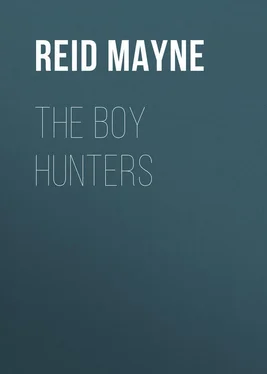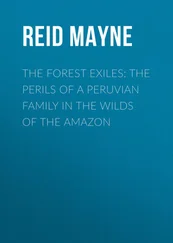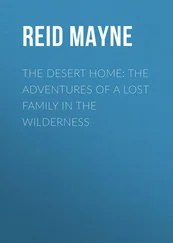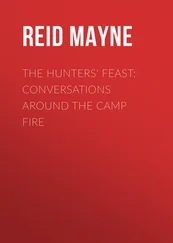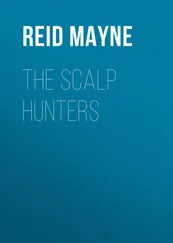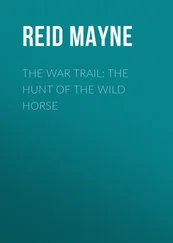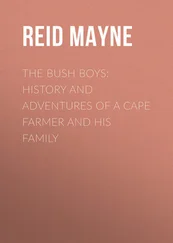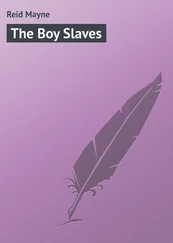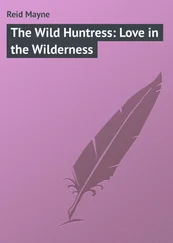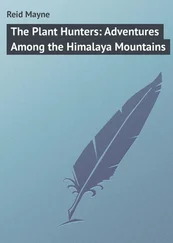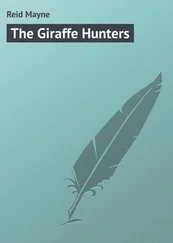Mayne Reid - The Boy Hunters
Здесь есть возможность читать онлайн «Mayne Reid - The Boy Hunters» — ознакомительный отрывок электронной книги совершенно бесплатно, а после прочтения отрывка купить полную версию. В некоторых случаях можно слушать аудио, скачать через торрент в формате fb2 и присутствует краткое содержание. Жанр: literature_19, foreign_antique, foreign_prose, на английском языке. Описание произведения, (предисловие) а так же отзывы посетителей доступны на портале библиотеки ЛибКат.
- Название:The Boy Hunters
- Автор:
- Жанр:
- Год:неизвестен
- ISBN:нет данных
- Рейтинг книги:3 / 5. Голосов: 1
-
Избранное:Добавить в избранное
- Отзывы:
-
Ваша оценка:
- 60
- 1
- 2
- 3
- 4
- 5
The Boy Hunters: краткое содержание, описание и аннотация
Предлагаем к чтению аннотацию, описание, краткое содержание или предисловие (зависит от того, что написал сам автор книги «The Boy Hunters»). Если вы не нашли необходимую информацию о книге — напишите в комментариях, мы постараемся отыскать её.
The Boy Hunters — читать онлайн ознакомительный отрывок
Ниже представлен текст книги, разбитый по страницам. Система сохранения места последней прочитанной страницы, позволяет с удобством читать онлайн бесплатно книгу «The Boy Hunters», без необходимости каждый раз заново искать на чём Вы остановились. Поставьте закладку, и сможете в любой момент перейти на страницу, на которой закончили чтение.
Интервал:
Закладка:
“So much for the white and black mulberry-tree. We now come to the third species, the red ( Morus rubra ).
“That is the red before your face,” continued Lucien, pointing to the trees, which he had already designated. “It is so called from the fruit, which, as you know, are of a dark red colour, and resemble red raspberries more than anything in the world. Some of these trees, you see, are nearly seventy feet in height, though it usually does not reach so high. You notice the leaves. The are heart-shaped, many of them ten inches long, and nearly as broad as long. They are dark green and rough, and for feeding the silkworm quite useless where the white mulberry grows. They form a delightful shade, however; and this is one of the uses of this beautiful tree. The fruit, too, is, in my opinion – and I think François will agree with me – quite equal to the best raspberries. As for the wood, it is much used in the dockyards of the Southern states. It is of a pale lemon colour; and is considered more durable for trenails than any other – that of the locust excepted.
“The red mulberry, like the white and black species, runs into several varieties, differing considerably from each other.
“There is still a fourth species of this genus, called the paper mulberry ( Morus papyrifera ). This, however, has been separated by botanists into another genus; but it is worth a word here, as it is a very curious and valuable tree, or, rather, a large shrub, for it does not grow so tall as either of the other three. It is a native of China, Japan, and the islands of the Pacific Ocean; but, like the others, it is cultivated for ornament both in Europe and America. Its fruit, which is of a scarlet colour, is globe-shaped, and not oblong, as that of the true mulberries; and this is one reason why it has been separated into a genus by itself. Its leaves are of no use for silk-making, but they make excellent food for cattle; and as the tree grows rapidly, and carries such large bunches of leaves, some people have said that it would yield better than grass, and should be cultivated for pasture. I do not know whether this has been tried yet. The most interesting part of the paper mulberry is its bark, which is used in the manufacture of paper both in China and Japan. The beautiful India paper used for engravings is made from it, and so, too, is the fine white cloth worn by the natives of the Society Islands, and which so much astonished Europeans when they first saw it. It would be interesting to detail the process of manufacturing this cloth as well as the paper, but it would take up too much of our time at present.
“There is another genus of trees which resembles the mulberries very much. They are valuable for their wood, which produces a fine yellow dye, known by the name of ‘fustic-wood.’ The tree that produces the best of this dye is the Morus tinctoria , and grows in the West Indies and tropical America; but there is a species found in the southern United States, of an inferior kind, which produces the ‘bastard fustic’ of commerce.
“So much, then, for the mulberry-tree; but I fear, brothers, I have left but little time to describe the others.”
“Oh! plenty of time,” said Basil; “we have nothing else to do. We are better learning from you than rambling idly about; and upon my word, Luce, you make me begin to take an interest in botany.”
“Well, I am glad of that,” rejoined Lucien, “for I hold it to be a science productive of much good, not only on account of its utility in the arts and manufactures, but to the mind of the student himself; for, in my belief, it has a refining influence.”
And Lucien was about to continue his description of the trees, when a series of incidents occurred which put an end to the conversation, at least upon that subject.
These incidents are recorded in the chapter which follows.
Chapter Eleven.
The Chain of Destruction
Directly in front of the tent, and at no great distance from it, a thick network of vines stretched between two trees. These trees were large tupelos, and the vines, clinging from trunk to trunk and to one another, formed an impenetrable screen with their dark green leaves. Over the leaves grew flowers, so thickly as almost to hide them – the whole surface shining as if a bright carpet had been spread from tree to tree and hung down between them. The flowers were of different colours. Some were white and starlike, but the greater number were the large scarlet cups of the trumpet-vine ( bignonia ).
François, although listening to his brother, had for some time kept his eyes in that direction, as if admiring the flowers. All at once, interrupting the conversation, he exclaimed, —
“ Voilà ! look yonder – humming-birds!”
Now the sight of humming-birds is not so common in America as travellers would have you believe. Even in Mexico, where the species are numerous, you will not see them every day. Indeed, you may not notice them at all, unless you are specially looking for them. They are such small creatures, and fly so nimbly – darting from flower to flower and tree to tree – that you may pass along without observing them, or perhaps mistake them for bees. In the United States, however, where only one species has yet been noticed, the sight is a rare one, and generally interesting to those who witness it. Hence François’ exclamation was one of surprise and pleasure.
“Where are they?” inquired Lucien, starting up in an interested manner.
“Yonder,” replied François, “by the trumpet flowers. I see several, I think.”
“Softly, brothers,” said Lucien; “approach them gently, so as not to fright them off – I wish to make some observations upon them.”
As Lucien said this, he walked cautiously forward, followed by Basil and François.
“Ah!” exclaimed Lucien, as they drew near, “I see one now. It is the ruby-throat ( Trochilus colubris ). He is feeding on the bignonias. They are fonder of them than any other blossoms. See! he has gone up into the funnel of the flower. Ha! he is out again. Listen to his whirring wings, like the hum of a great bee. It is from that he takes his name of ‘humming-bird.’ See his throat, how it glitters – just like a ruby!”
“Another!” cried François; “look above! It is not near so pretty as the first. Is it a different species?”
“No,” replied Lucien, “it is the female of the same; but its colour is not so bright, and you may notice that it wants the ruby-throat.”
“I see no others,” said François, after a pause.
“I think there are but the two,” remarked Lucien, “a male and female. It is their breeding season. No doubt their nest is near.”
“Shall we try to catch them?” inquired François.
“That we could not do, unless we had a net.”
“I can shoot them with small shot.”
“No, no,” said Lucien, “the smallest would tear them to pieces. They are sometimes shot with poppy-seeds, and sometimes with water. But never mind, I would rather observe them a bit as they are. I want to satisfy myself upon a point. You may look for the nest, as you have good eyes. You will find it near – in some naked fork, but not among the twigs or leaves.”
Basil and François set about looking for the nest, while Lucien continued to watch the evolutions of the tiny little creatures. The “point” upon which our young naturalist wished to be satisfied was, whether the humming-birds eat insects as well as honey – a point which has been debated among ornithologists.
As he stood watching them a large humble-bee ( Apis bombylicus ) came whizzing along, and settled in one of the flowers. Its feet had scarcely touched the bright petals, when the male ruby-throat darted towards it, and attacked it like a little fury. Both came out of the flower together, carrying on their miniature battle as they flew; but, after a short contest, the bee turned tail, and flew off with an angry-like buzz, – no doubt, occasioned by the plying of his wings more rapidly in flight.
Читать дальшеИнтервал:
Закладка:
Похожие книги на «The Boy Hunters»
Представляем Вашему вниманию похожие книги на «The Boy Hunters» списком для выбора. Мы отобрали схожую по названию и смыслу литературу в надежде предоставить читателям больше вариантов отыскать новые, интересные, ещё непрочитанные произведения.
Обсуждение, отзывы о книге «The Boy Hunters» и просто собственные мнения читателей. Оставьте ваши комментарии, напишите, что Вы думаете о произведении, его смысле или главных героях. Укажите что конкретно понравилось, а что нет, и почему Вы так считаете.
